24 Types of Oranges for Unique Citrus Flavors
Author: Jen Worst | Editor: Omar Alonso
Review & Research: Jen Worst & Chris Miller
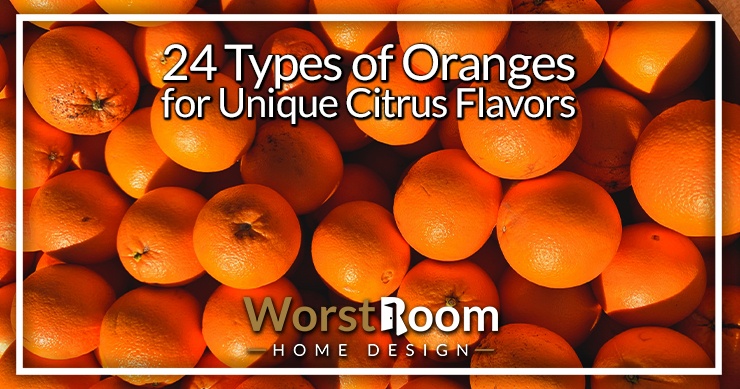
The many different types of oranges are all juicy fruits. You can eat them ripe and fresh, or you can use them to make and flavor some dishes, while also using them to make jams and juices. They are healthy and packed with nutrients too, but are you aware of the various kinds of oranges out there?
24 Types of Oranges
There are different varieties, each of which can differ in terms of taste, size, usage and where they come from. You can try each of these out if you can find them near you while also keeping some of them around for different purposes.
Let’s take a look at some of these orange species in further detail. And when you're done, you'd probably have fun checking out all the types of watermelon out there, as well.
Moro Tarocco Orange
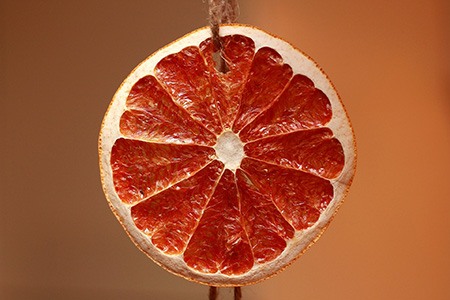
Moro Tarocco oranges are usually hybrids between the Moro and Tarocco orange varieties. These come from Italy and can offer both red and orange colors inside the peel due to the hybridity and the effect of a colorant. These oranges don’t contain any seeds and are quite moist and sweet in flavor.
Bigaradier Apepu Orange
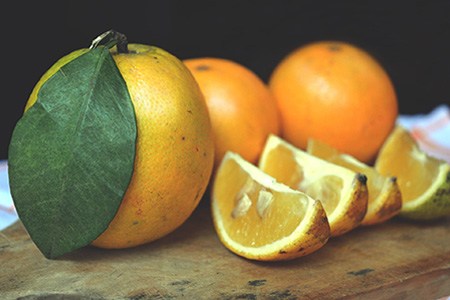
This type of orange is a variety that is quite similar to the Seville orange and, in fact, belongs to the same species or group. This orange tastes a bit bitter and tangy, with the peels being thick, bright orange and wrinkly. These oranges have several seeds in them while also having a dozen or so sections.
Bahianinha Orange
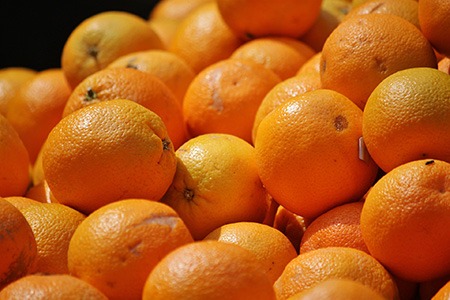
These oranges are generally smaller as compared to some other oranges. The peel is thick, although it is still thinner than its closest relative, the navel orange. The topmost section of this orange has a cavity that can allow you to take the peel off conveniently. These oranges are pulpy and juicy with no seeds.
Jaffa Orange
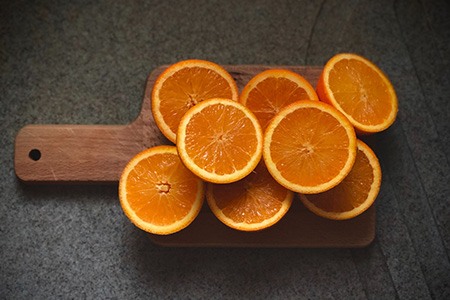
Jaffa orange fruit types are native to and commonly grown in parts of the Middle East and the Mediterranean along with several other countries in Asia and Southern Europe. These oranges usually have very few seeds, many also being seedless.
These types of oranges carry a sweet flavor with a bitter aftertaste. They don’t have much juice and have a thick peel. They're probably not the exact types of fruit trees you'd want to grow at home, but they're worth trying.
Pera Orange
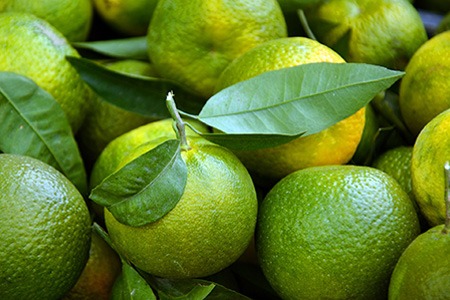
Pera oranges are native to Brazil. They are generally small in size and have plenty of seeds, which doesn’t make them too popular. Their firmness and thickness also make them a bit tough to consume. The flavor, however, tends to be quite fine, sweet and tender. It tends to mature a bit later on in its growth.
Valencia Orange
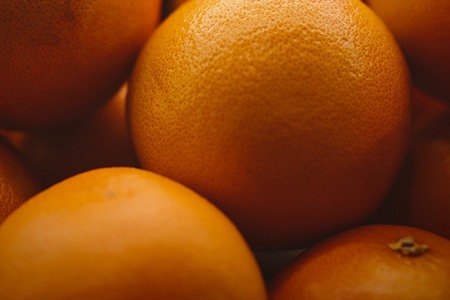
Valencia oranges are popular golden-yellow oranges that offer sweet, succulent and juicy flavors. They are quite commonly used to squeeze out orange juice, even commercially. Their peels are quite thin and can have up to nine seeds. They are mainly grown in Florida and California in the United States.
Clementine
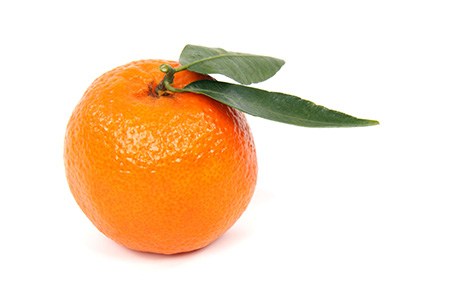
Clementine is a type of orange formed due to a cross between mandarins and sweet oranges. These oranges are tiny in size and are also a seedless variety. They have thin and shiny peels with several small segments inside them. They have low acidic content and are quite syrupy, juicy and sweet and are best eaten in winter.
Pineapple Orange
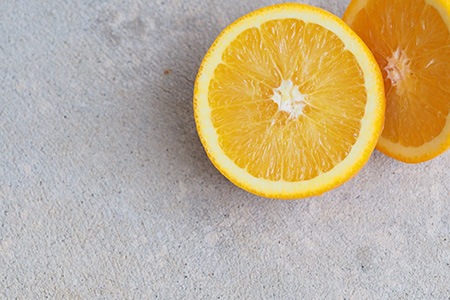
Pineapple oranges are medium to large in size. They have a rich orange color and a rough and thick peel. Pineapple oranges are mainly grown in parts of Florida and are usually harvested and eaten in the months of winter.
They carry a few seeds but are generally quite sweet and juicy, making them popular for making homemade and commercial juice.
Lima Orange
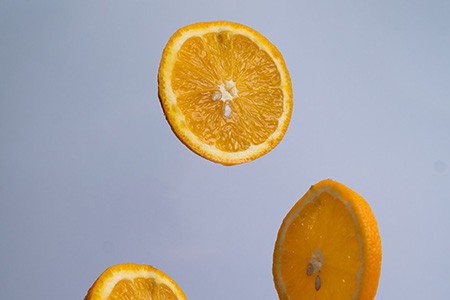
These oranges come from Brazil, although many are also cultivated in Mediterranean countries. These oranges are acidless or acid-free, making them nutritious but also meaning that they have short lifespans. They have a sweet taste and can be ideal for eating and making orange juice. They are usually available at the end of winter and spring.
Chinotto Orange
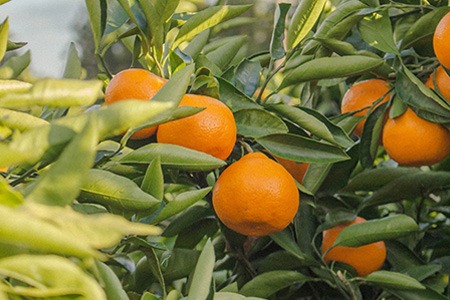
These types of oranges come from Italy and are typically small in size. They come from the myrtle-leaved orange tree and tend to have a bitter taste, making them unpopular for direct eating and juicing. However, they hold much popularity as a flavoring and for making sweets and confectionary.
Hamlin Orange
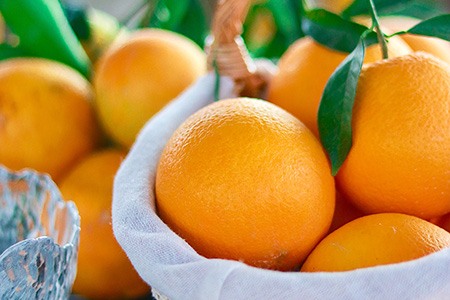
Hamlin oranges are quite sweet and tend to grow well even in cold climates. They tend to become ripe quite early on and are small to medium in size. These oranges have a tangy and sweet flavor. The peels are thin with the oranges carrying either very few or no seeds.
Parson Brown Orange

Parson Brown oranges were basically cultivated by accident by Reverend N.L. Brown, after whom these oranges are named. They are now mainly grown in Florida. Parson Brown oranges carry several seeds but tend to be juicy, tender, firm and sweet, making them suitable for eating, flavoring, cooking and juicing. They usually mature fairly quickly.
Seville Orange
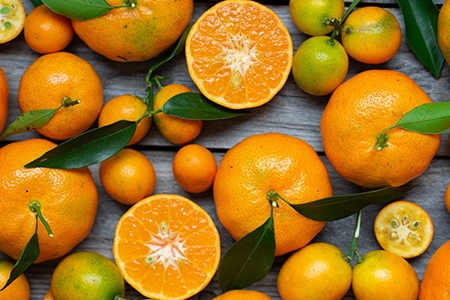
Seville oranges are quite sour and bitter in taste, native to Southeast Asia and the Mediterranean. They are tangy and strong oranges, which is why they aren’t eaten much directly or used in juices.
They contain plenty of acidic content as well, making them more suitable for flavoring and in marmalades, marinades, sauces, salad dressings, pairing them with any types of guava, and more.
Trifoliate Orange
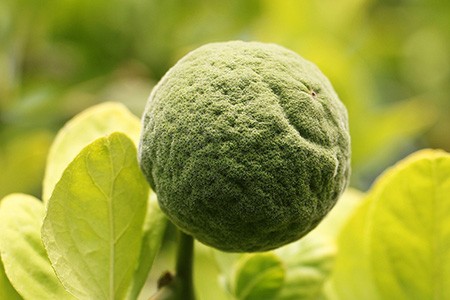
Trifoliate oranges have their origins in China, Korea and Japan and are also called hardy oranges, Chinese bitter oranges or Japanese bitter oranges. They are bitter in taste and can grow pretty well even in cold climates.
These oranges are quite small and are mainly used to make marmalade while also holding importance as traditional medicine. Their bitter taste can be dampened by using them with any types of limes to help mask that flavor a bit.
Bergamot Orange
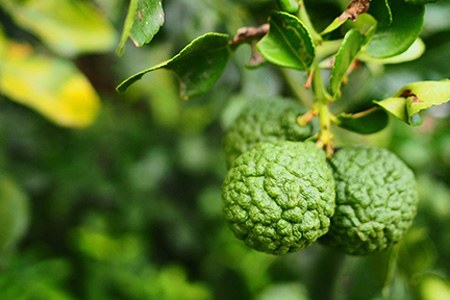
Bergamot oranges are tangy, often carrying a fresh scent. These oranges are usually yellow and green in color due to a probably cross between lemons and bitter oranges. They taste quite bitter and have high acidity levels, making them more useful for marmalades, teas, syrups and flavoring, although their peels are used in cosmetics.
Satsuma
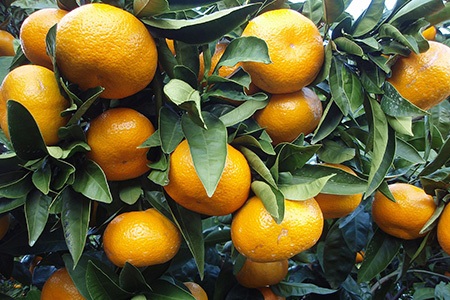
Satsuma oranges come from China and Japan. These types of oranges are medium to large in size and usually contain a small number of seeds, with some seedless fruits seen too. Their peels are quite loose and simple to remove. They taste extremely sweet and are also quite juicy and delicate.
Mandarin
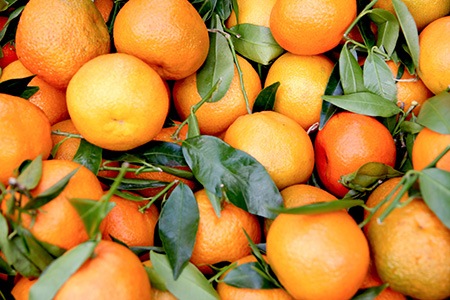
Mandarins are small in size and are usually flatter and longer than other rounder varieties of oranges. They have loose rinds and carry a sweet flavor while also offering a slightly firm texture. Mandarin orange types are often seedless too, making them great for snacking. They also have uses in salads, flavoring and baking.
Navel Orange
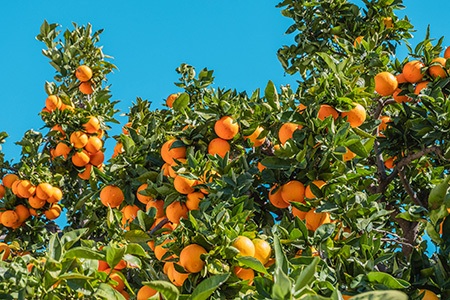
These are perhaps the most common and popular kinds of oranges. They have thick peels and tend to be quite sweet, although they also offer a bit of bitterness. They have a cavity at the base that resembles a navel, which is where their name comes from. These juicy and seedless oranges are cultivated worldwide. Peel these oranges, drop them in any types of juicers, and enjoy a refreshing beverage.
Bittersweet Daidai Orange
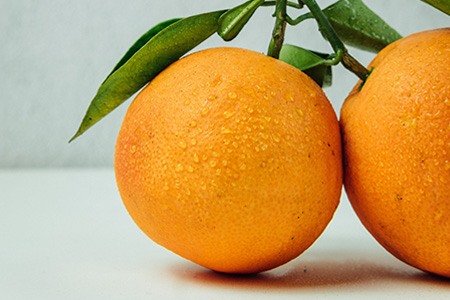
Daidai oranges are bitter or sour orange varieties that have their origins in the Himalayas, later getting introduced in other parts of Asia such as China and Japan. These oranges tend to have thick peels and plenty of seeds. They can be used for making sauces (like ponzu), with the peels being useful in traditional medicine.
Cara Cara Orange
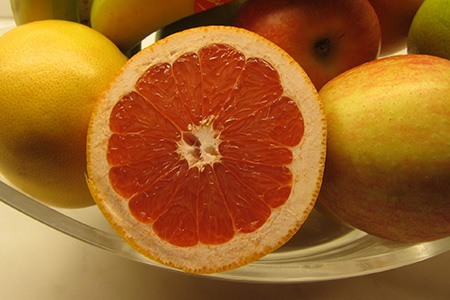
Cara Cara oranges, also known as red-fleshed navel oranges, originate in Venezuela. They are also grown in other parts of the world and are generally seedless with low levels of acidity, making them extremely sweet. These types of orange fruit also have other flavor notes too, making them great to eat and juice.
Gou Tou Orange
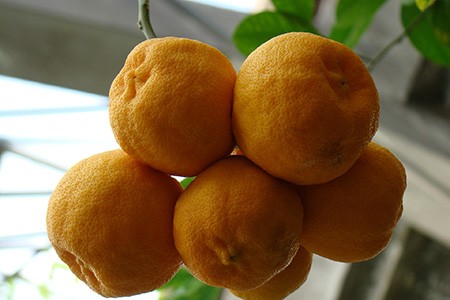
Hailing from China, these oranges are yellow in color and typically have thick peels. They have few seeds but these are quite big in size. In terms of flavor, these oranges taste quite sour and bitter, making them unsuitable and unpopular to eat. They are, however, quite popular for marmalades, sauces and medicines.
Tangerine
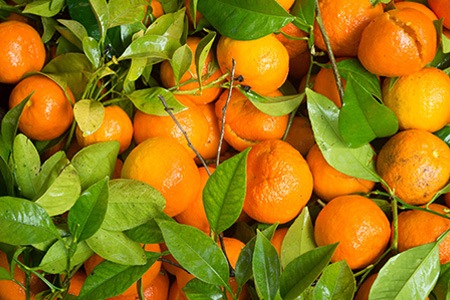
Tangerines are smaller than other types of oranges and are usually a cross between mandarins and pomelos. These are usually quite sweet in taste and tend to have thin but loose peels, making them convenient to remove. Some have seeds while some are seedless. They can be eaten as they are or juiced.
Tangelo
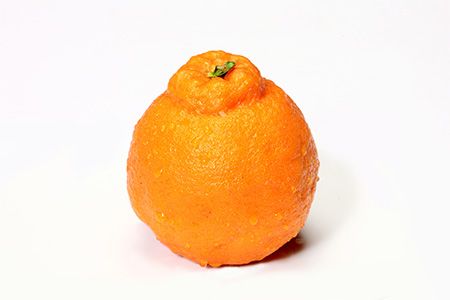
Tangelos are usually a cross between tangerines and pomelos. They tend to be medium to large in size and are usually quite tangy and sour in taste, which is why they have more popularity in making marmalades and sauces. Their peels are loose and have an erect stem at the top.
Blood Orange
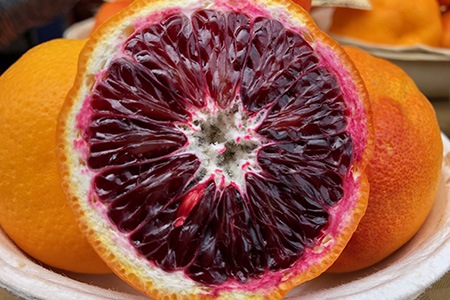
Blood oranges are popular types of oranges. Their peels are thick and orange but their flesh is a deep dark red color because of anthocyanins. These oranges are juicy and tangy, although some can taste sweet too. They can be used in juices, marmalades, sauces and desserts.
More Varieties of Oranges
Obviously we can't write a novel about every one of the different kinds of oranges in existence. We don't want to and you wouldn't want to read it. But we can quickly list off some more different oranges for you to explore:
- Biondo Comune
- Dream Navel
- Jincheng Orange
- Midsweet Orange
- Washington Navel
- Murcott Orange
- Belladonna Orange
- Berna Orange
- Acidless Orange
- Ovale Orange
- Salustiana Orange
- Cadanera Orange
- Byeonggyul Orange
- Narinj Orange
- Rhode Red Orange
- Sicilian Red Orange
- Homosassa Orange
- Scarlet Navel
- Navelina Orange
- Maltaise Orange
- Macetera Orange
- Cherry Orange
- Lue Gim Gong
- Joppa Orange
- Excelsior Orange
That should do it for any orange aficionado out there who really wants to explore this different orange fruit in full depth. If you find one that's just absolutely amazing, more so than the rest, let us know so we can include it in the main list. When you're done, you'd probably enjoy learning about the various types of melons out there, too.
Types of Oranges With Unique Flavor Profiles
You might find yourself at the store or market faced with multiple varieties of oranges. Which orange species you should pick can depend on your tastes and requirements (with some also differing in their costs), but at least now you know about the distinctions of different types of oranges so that you can choose in an informed manner.



